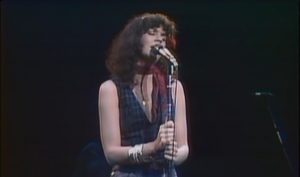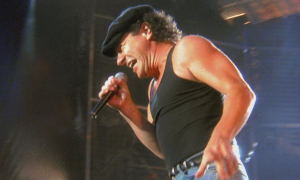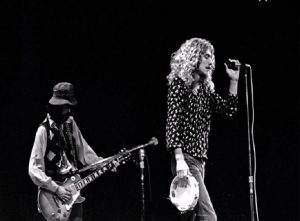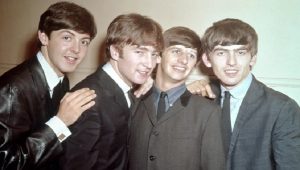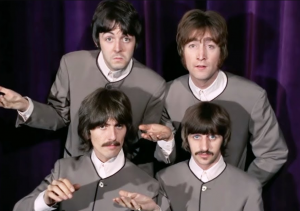The Music Genres That Disappeared Or Went Extinct

via Loud And Proud Records / Youtube
Fads come and go, and music is no exception. Musical tastes evolve over time, and some genres that were once incredibly popular fade from the mainstream.
Today, we’re taking a trip down memory lane to explore some of these musical movements that have gone extinct. From the smooth sounds of Easy Listening to the rebellious anthems of Gangsta Rap, we’ll be counting down some of the most interesting genres that fell out of favor.
Get ready for a musical history lesson you won’t forget! Even though these genres may not be dominating the airwaves today, they all left their mark on the history of music.
20. Emo
Emo’s journey is a fascinating one. Emerging in the mid-80s from the hardcore punk scene, its early sound was a far cry from the image it would later project. These pioneers were interested in pushing the emotional boundaries of punk, not eyeliner and skinny jeans.
Fast forward to the early 2000s, and emo transformed into a mainstream phenomenon. Bands like Jimmy Eat World and Taking Back Sunday led a generation of disaffected youth, complete with a signature fashion style and the Vans Warped Tour. While catchy and relatable, the trend sputtered out by 2010. The bands that brought emo to the forefront largely moved on to new sonic territories, leaving the scene in a near-comatose state.
19. Gangsta Rap
Gangsta rap ruled the hip-hop scene throughout the 80s and 90s, particularly on the West Coast. Defined by its signature orange aesthetic, gritty lyrics reflecting urban realities, and groundbreaking artists like N.W.A, Tupac, and Snoop Dogg, it became synonymous with West Coast hip-hop.
The genre’s “Golden Age” tragically ended in the mid-90s with the murders of Tupac and Biggie. Some argue Kanye West’s “Graduation” delivered the final blow, paving the way for more experimental rap styles. However, gangsta rap’s influence is undeniable. Its sonic and lyrical elements live on in genres like drill music, proving its lasting impact.
18. Yacht Rock
Yacht rock isn’t quite a genre in the traditional sense. It’s a more recent term, coined in 2005 through a satirical online series, used to describe a specific brand of smooth 70s and 80s soft rock. Think Kenny Loggins, Toto, Steely Dan – music perfect for unwinding on a yacht with a glass of wine as the sun sets.
Despite its recent origin, yacht rock has become a target for playful criticism. Some find the music bland, the lyrics inoffensive to a fault, and the whole aesthetic dripping with privilege. But hey, there’s a reason these tunes are so enduringly popular. Sometimes, you just need the mellow vibes of “Africa” to wash your worries away.
17. Classical Music
Is classical music a relic of the past? While it’s true that iconic pieces are still performed globally and film scores often borrow heavily from the genre, classical music struggles to capture the popular imagination in the same way.
Can you name a contemporary composer who’s a household name? The genre’s biggest stars all composed centuries ago. Sure, there’s a place for rocking out to Tchaikovsky, but classical music’s current scene lacks the fresh energy and buzz that contemporary music thrives on.
16. Outlaw Country
In the squeaky-clean world of country music during the 50s and 60s, the polished Nashville sound reigned supreme. This poppy style, designed for maximum sales, left little room for grit or complexity. But a group of rebels emerged, led by Johnny Cash, Willie Nelson, and Kris Kristofferson. Yearning for a more mature and raw sound, they clashed with the industry’s expectations.
This birthed outlaw country, a genre named for both the rebellious spirit of its artists and the morally ambiguous characters that populated their lyrics. The movement flourished through the late 70s, but eventually faded as country music embraced a pop sensibility once more. Songs like Hank Williams Jr.’s “All My Rowdy Friends (Have Settled Down)” mirrored the aging of the outlaws themselves, marking the end of an era.
15. Easy Listening
Easy listening lives up to its name – it’s music designed to melt into the background and provide a relaxing soundtrack. Think smooth instrumental renditions of popular tunes and calming vocals courtesy of lounge legends like Frank Sinatra, Dean Martin, and Tony Bennett. This genre thrived in the post-war era, roughly between the 40s and 60s.
However, the rise of rock and roll and the countercultural movements of the 60s challenged easy listening’s dominance. Often seen as representing the old guard, the genre struggled to compete with the raw energy and rebellious spirit of the new wave. Easy listening eventually faded, replaced by adult contemporary music. Today, it’s often viewed as a nostalgic reminder of a bygone era.
14. Seapunk
The early 2010s saw a surge in 90s nostalgia, and this trend trickled down to music with the rise of seapunk. This subculture, primarily centered on the social media platform Tumblr, also had a small but dedicated following in Chicago nightclubs. Seapunk drew influences from various popular 90s music styles, blending pop, R&B, house, and even Southern hip-hop into a unique sonic tapestry.
Despite its niche appeal, seapunk did leave its mark. Mainstream artists like Rihanna and Azealia Banks incorporated the aesthetic into their work, with Rihanna’s “Diamonds” performance on Saturday Night Live and Azealia Banks’ music video for “Atlantis” being prime examples. However, similar to how easy listening music evokes a specific era, seapunk became a sonic snapshot of the early 2010s, a fleeting trend rather than a lasting musical movement.
13. Eurotrance
Following the massive popularity of trance music in the late 80s and early 90s, a subgenre emerged that would rule the dance floors in the latter half of the decade: Eurotrance. This energetic style originated in Frankfurt, Germany, building on the foundation of trance with influences from hard trance (known for its aggressive sound) and Eurodance (heavy on catchy vocals and electronic elements). Eurotrance was the perfect soundtrack for nightclubs and raves, often accompanied by a sea of glowing lightsticks.
However, Eurotrance’s reign was bright but brief. By the year 2000, the subgenre had faded from mainstream popularity as quickly as it had risen. Despite its short lifespan, Eurotrance left an undeniable mark on dance music, and its influence can still be heard in electronic music today.
12. Swing/Big Band
Swing music and big bands are synonymous with the vibrant energy of the 1930s. Rising to prominence in the early part of the decade, big band leaders like Count Basie, Duke Ellington, and Benny Goodman whipped up a musical frenzy that captivated the nation. Swing’s infectious rhythms and focus on instrumental prowess proved to be a morale booster during the dark days of World War II.
However, the war itself ironically played a part in swing’s demise. The social and economic realities of wartime – travel restrictions, military drafts, and financial strain – made it difficult for big bands to maintain their operations. By the late 40s, swing had largely faded from the spotlight. Unlike other genres, swing enjoyed a brief revival in the 1990s, but this resurgence eventually fizzled out, leaving swing as a cherished relic of a bygone era.
11. Pub Rock
The mid-70s rock scene was a world of extravagance. Lavish productions, operatic rock, and bands decked out in flamboyant costumes dominated the airwaves. In reaction to this overproduced spectacle, pub rock emerged as a gritty back-to-basics movement. Inspired by the raw energy of R&B and the early days of The Rolling Stones, pub rock bands stripped things down.
They traded elaborate outfits for ripped jeans and messy hair, playing in the intimate setting of English pubs. Their music was similarly unpretentious, recorded on independent labels without the need for expensive studio polish. This focus on raw energy and stripped-down production laid the groundwork for the punk explosion that would soon follow.
10. Acid Jazz
Acid jazz was a vibrant melting pot of sound, born in the London club scene of the 1980s. DJs and musicians weren’t afraid to mix genres, blending the smooth sounds of jazz with the driving rhythms of funk, disco, and even a touch of hip-hop. This innovative approach resonated with audiences, and magazines like Q hailed it as “the most significant jazz form to emerge out of the British music scene”.
Bands like The Brand New Heavies and Jamiroquai rose to prominence, capturing the genre’s infectious energy. However, the fast-paced world of club music is ever-changing. By the early 90s, the rise of Electronic Dance Music (EDM) swept in, bringing rave culture and a new sound to the forefront. Acid jazz, once a dominant force, found itself overshadowed by the latest trend.
9. Third Wave Ska
Ska! You know the sound – upbeat tempos, brassy melodies, and skanking rhythms. But did you know there were distinct waves of ska popularity? The first wave rose from the shores of Jamaica in the 50s, while the UK brought a second wave in the 70s with bands like Madness.
Then came the American invasion – the third wave. Mighty Mighty Bosstones and No Doubt led the charge, bringing infectious ska tunes to the mainstream. However, by the late 90s, ska’s popularity waned, fading back into the underground scene.
8. Crunk
The thumping basslines and infectious energy of Crunk took the early 2000s by storm. Pioneered by Southern hip-hop giants like Three 6 Mafia, Crunk found its true champion in Lil Jon, the man with the unmistakable voice and larger-than-life persona. Armed with anthems like “Get Low” and “Get Crunk”, Lil Jon injected Crunk with pop appeal, transforming nightclubs nationwide.
Crunk’s defining features – booming bass, high-octane energy, and call-and-response vocals – were undeniable, but the party couldn’t last forever. By the late 2000s, the genre’s intensity had waned, leaving behind a legacy of infectious beats and a reminder that even the most energetic trends eventually run their course.
7. Dubstep/Brostep
The mid-2000s saw a curious musical migration. Sonny Moore, frontman of the influential emo band From First To Last, wasn’t the only one evolving. Alongside a wave of American producers, he helped birth a new sound: brostep, a more aggressive subgenre of dubstep.
Brostep quickly amassed a passionate fanbase, but also ignited controversy. Existing dubstep fans, particularly those overseas, found it a brash departure from the genre’s roots. Like a shooting star, brostep’s popularity skyrocketed in 2011, only to fade dramatically in subsequent years. Today, it remains a niche interest, a reminder of the genre’s explosive, albeit brief, moment in the spotlight.
6. Hair Metal
The 80s were all about excess, and hair metal embodied that spirit perfectly. With mountains of teased hair, flamboyant outfits, and enough pyro to light up a small city, bands like Mötley Crüe, Poison, and Guns N’ Roses ruled the rock scene. Their music was a potent mix: stadium-ready anthems fueled by catchy riffs, pop sensibilities, and raw energy.
Guns N’ Roses’ Appetite for Destruction became a cultural phenomenon, the best-selling debut album in US history. But by the mid-90s, the glam had faded. A new generation craved something different, and grunge emerged as a direct reaction to hair metal’s over-the-top theatrics. Hair metal’s reign ended, but its impact on rock music remains undeniable.
5. Britpop
Britpop rose from the ashes of grunge. A reaction to the American genre’s angst, Britpop celebrated British identity and music heritage. Bands like Blur, Oasis, and The Verve reveled in catchy guitar hooks and distinctly British lyrics, even finding success across the pond without compromising their sound.
However, Britpop’s flame burned brightly but briefly. 1995 saw its peak, fueled by the epic chart battle between Blur and Oasis. By 1997, the genre’s momentum fizzled, with Oasis’ third album failing to recapture the magic. While short-lived, Britpop left a lasting mark, influencing future generations of British musicians.
4. New Wave
New wave wasn’t easily defined. In the 70s, it was a label for pioneering bands like the New York Dolls and The Velvet Underground. These rule-breakers defied categorization, fusing rock and punk with a spirit of experimentation that pushed boundaries. Later, “new wave” became a broader term for energetic, alternative rock or punk-influenced music with a modern pop twist.
Synthesizers and electronic sounds became common threads in the genre. New wave itself didn’t disappear; it morphed. Bands carved out their own niches, spawning subgenres like post-punk, power pop, and synthpop. The term “new wave” simply fell out of fashion as these new classifications took hold.
3. Nu Metal
Nu metal was the soundtrack to teenage rebellion in the late 90s, a genre that sent shivers down parents’ spines and left music critics speechless. Imagine a musical melting pot: angst-ridden vocals borrowed from grunge, rhythmic elements from rap and funk, electronica flourishes, all wrapped in accessible song structures. The result? Questionable fashion choices, a focus on nihilism, and a generation of moshing fans – culminating in the infamous Woodstock ’99 riots.
Even bands like Korn, considered pioneers of the genre, distanced themselves from the nu metal label. While a brief revival emerged in the 2010s fueled by nostalgia, nu metal’s reign ended by the early 2000s.
2. Grunge
Grunge’s influence on music is undeniable, despite its relatively brief reign. This Seattle-born sound rose in the late 80s as a rebellion against the hair metal scene’s excess and theatrics. While grunge shared some musical roots with its rock predecessors, it rejected the glamor and embraced a raw, introspective sound.
Bands like Mudhoney paved the way, but it was Nirvana, Soundgarden, and Alice in Chains who propelled grunge into the mainstream. However, by the late 90s, the genre’s success became a double-edged sword. Radio-friendly post-grunge acts like Creed and Staind rose to prominence, while many pioneering grunge groups disbanded. Grunge may have faded, but its impact on alternative rock and the cultural landscape remains significant.
1. Disco
Unlike other genres that enjoyed extended popularity before fading away, disco has a unique claim to fame: a symbolic “death date”. On July 12th, 1979, at Comiskey Park in Chicago, disco met its fiery demise – or at least that’s how it seemed. The infamous “Disco Demolition Night” saw a crowd of 50,000 unite in their disdain for the genre, culminating in a riot after a box of disco records was ceremoniously blown up.
Dubbed “the night that disco died”, the event marked a sharp decline in disco’s popularity. However, disco wasn’t entirely gone. It took a backseat for a while, but resurfaced years later. Daft Punk’s 2013 album Random Access Memories brought disco back into the spotlight, proving that sometimes even a genre seemingly extinguished can spark a revival.

























